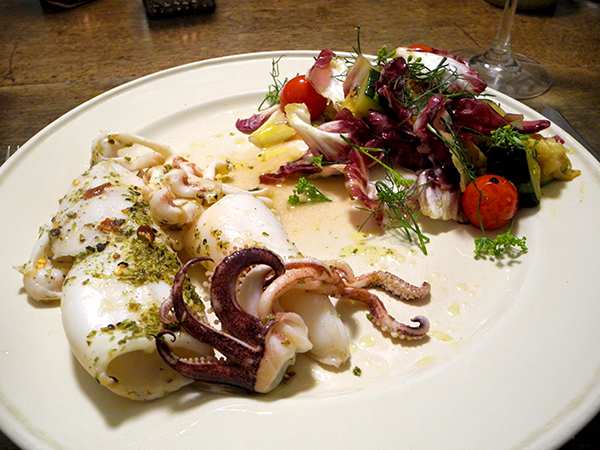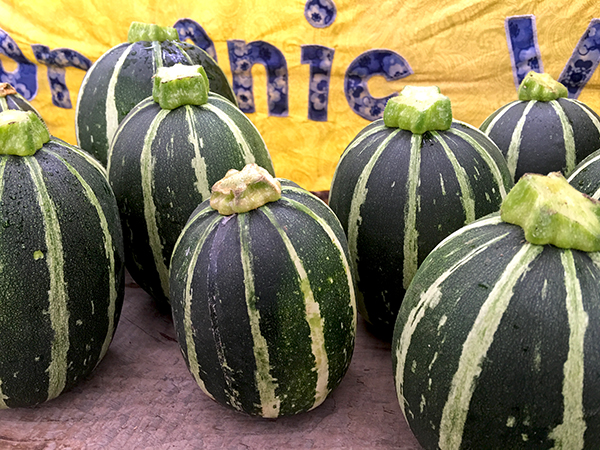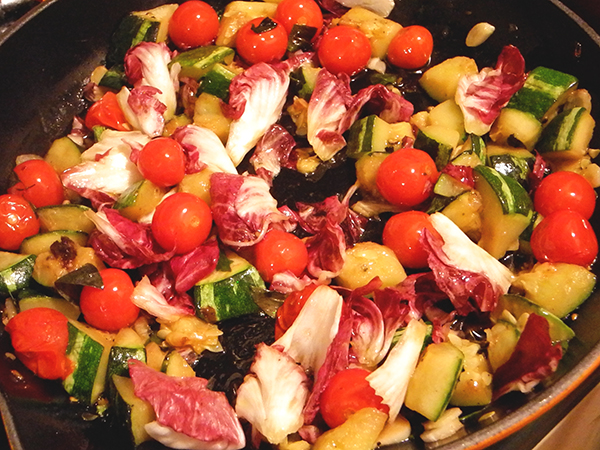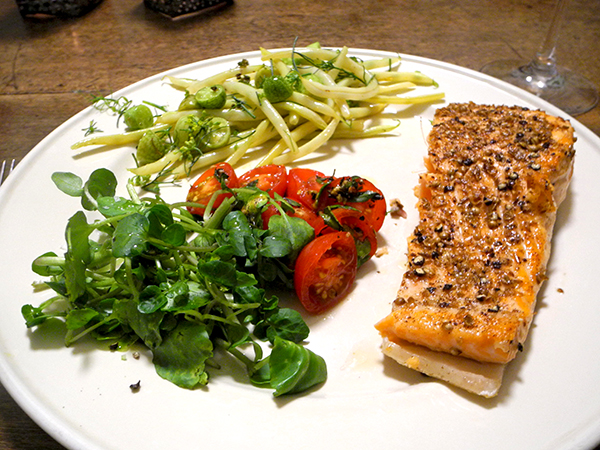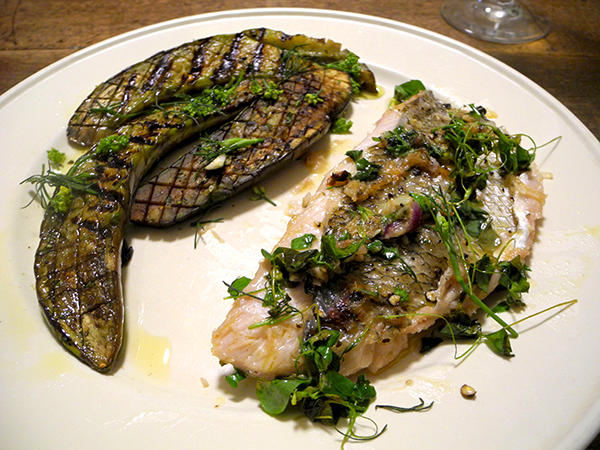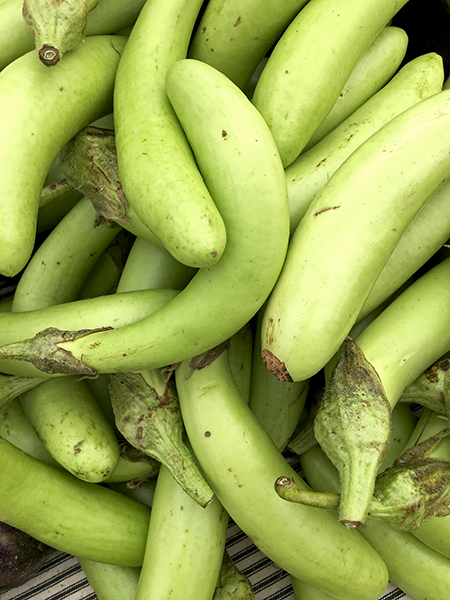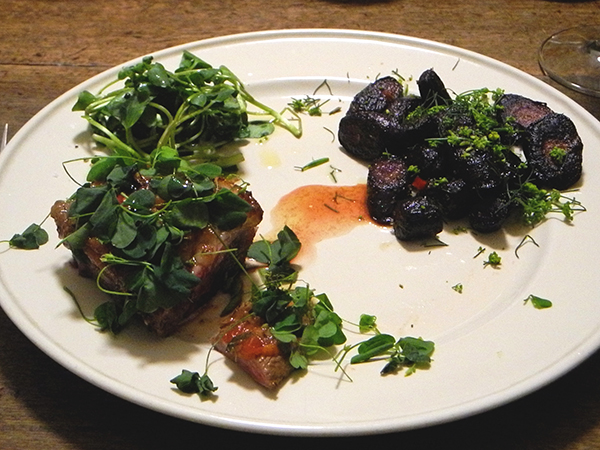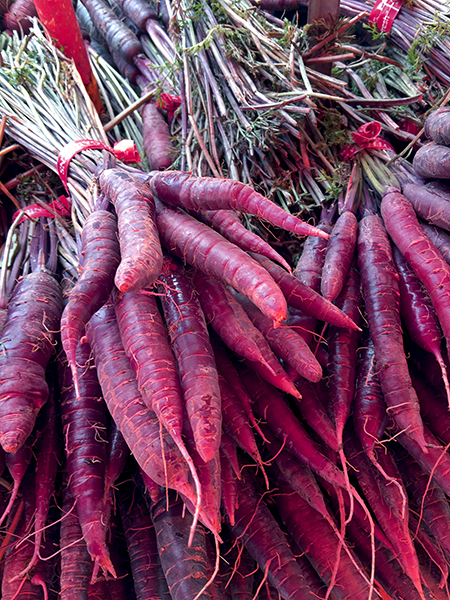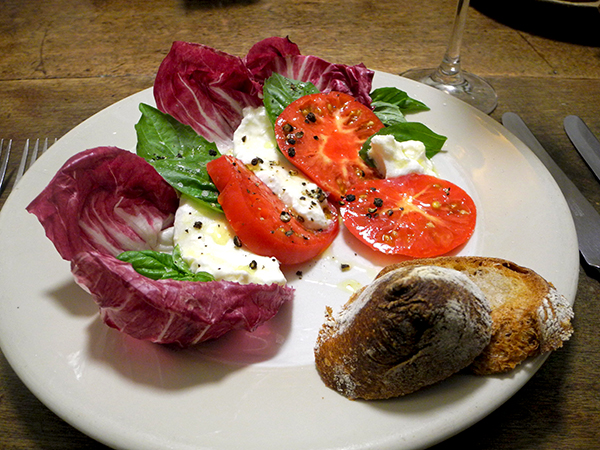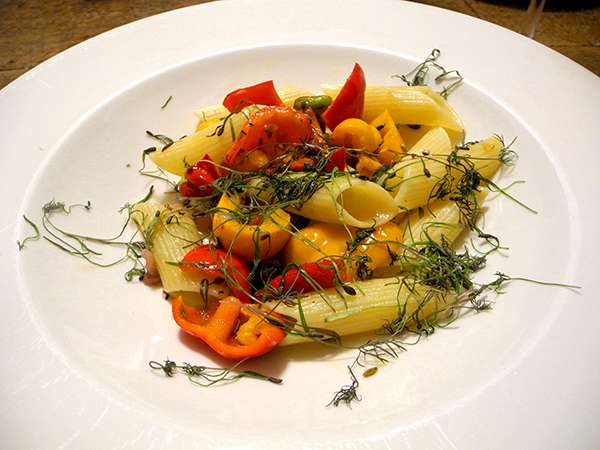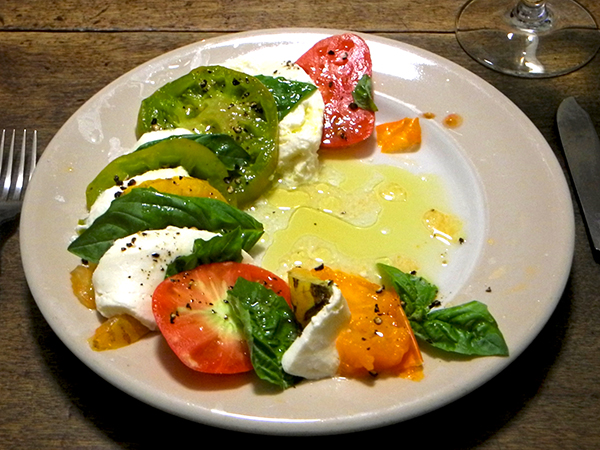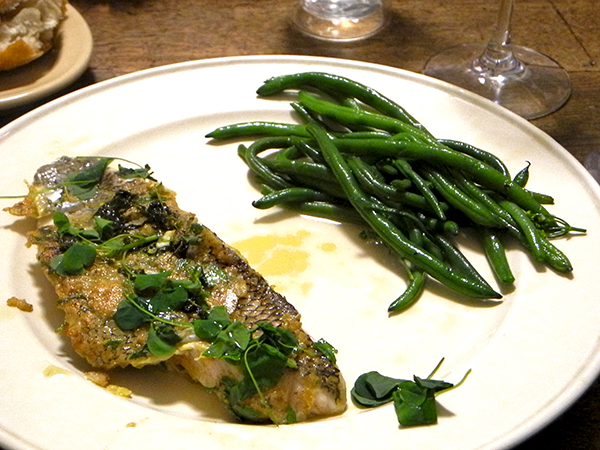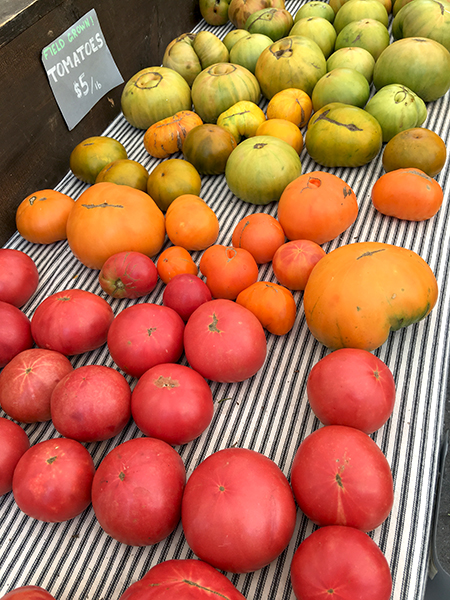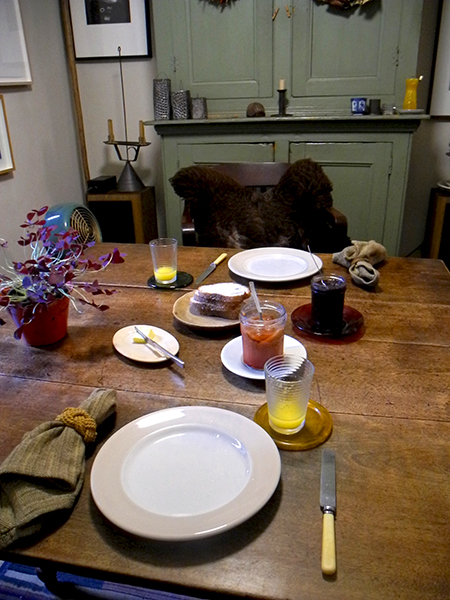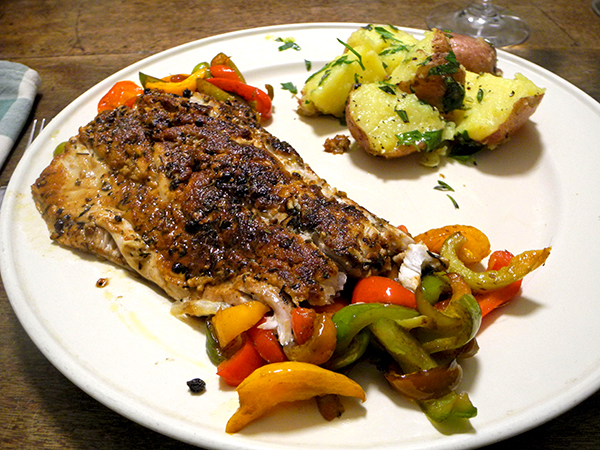
Bluefish. I had convinced myself that I could prepare it without using the oven. We hadn’t enjoyed it as an entrée in almost a year, which certainly eliminated the boredom factor (always a concern when you’re cooking fish several times a week, and it’s almost always local).
It was the first time I had used the recipe, and I don’t know where I found it, but I had printed it some time ago, with the caption, “‘Provincetown Bluefish’ (spicy)”. I was surely attracted to the reference to the Cape paradise whose culture was still very Portuguese when I first played there 50 years ago.
The single fillet I brought home on Saturday weighed about 18 ounces, far more than I would normally want for the two of us, but it was the smallest one in the stall on Saturday, it was, as always, inexpensive, and this superb pelagic fish sport fish is a very healthy choice, and currently a sustainable one.
Bluefish needs some kind of distraction to perform on the plate at its best. Usually that means some form of acid, and tomatoes are the most common. This time the distraction was provided by a lot of spice (although not the fiery kind), and some sweet peppers rendered a little more pungent with a little anchovy, and a little more sweet with a drizzle of balsamic vinegar.
- one 18-ounce skinned bluefish fillet from P.E. & D.D. Seafood, rinsed, halved, dried, coated on the flesh side with a mix of 1/2 tablespoon of Spanish Dolce Pimentón, 1/2 tablespoon of freshly-ground black pepper, 1/2 teaspoon of Jamaica cayenne, and 1/2 teaspoon of dried thyme (from a bottle just opened), sautéed in a large, heavy, tin-lined oval copper pan for 4 or 5 minutes on each side, on the coated side first, removed and placed on or adjacent to an accompaniment of sautéed peppers which had already been prepared
- eight small multi-colored bell peppers from Stokes Farm, washed, seeded, and julienned, sautéed inside a large seasoned cast iron pan with a little olive oil, stirring until they had become soft, 2 large salted anchovies (rinsed) added and cooked until they were dissolved, the pan removed from the heat and 2 teaspoons of balsamic vinegar added and stirred in [note: the amounts of all the ingredients could be doubled if there is no other vegetable]
- three large red ‘new potatoes’ from Norwich Meadows Farm boiled in well-salted water, drained, dried in the still-warm glass pot, quartered, rolled in a little olive oil, seasoned with salt and pepper, sprinkled with chopped parsley from Phillips Farm and chopped summer savory from Stokes Farm
- the wine was an Italian (Sicily) white, Catarratto ‘Vigna del Masso’, Feudo Montoni 2015
- the music was Henry Desmarest’s 1697 opera, ‘Venus & Adonis’, Christophe Rousset directing Les Talens Lyriques and the National Opera of Lorraine Chorus



